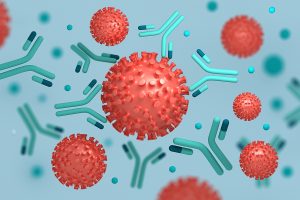Over the years research showed that plastics are harmful to babies’ brains. Companies that make plastic products use a chemical family of compounds, the phthalates. The reason is that they soften the plastic materials and in other instances harden them. February 18, 2021 a study appeared online by a commission that suggests to eliminate phthalates altogether.
CNN summarized the evidence of what phthalates do to the brain of the unborn late in pregnancy and in early childhood.
Exposure to phthalates
Phthalates are also called the “everywhere chemical”. Researchers found them in food and personal care items, in the car and in the home. You find them in food packaging, older vinyl flooring, in detergents, clothing and shower curtains. Phthalates are in rain and stain-resistant products, but also in hair spray, shampoos, soap and nail polish. They make fragrances last longer. Phthalates must be listed as part of the ingredient list except when they are in use for fragrances. In that instance the FDA allows up to 20% of the product content to consist of phthalates and the manufacturer can label them only as “fragrances”. This is still a big loophole.
Effects of phthalates on the young brain
The recent review of phthalates as neurotoxins has taken into consideration more than 30 studies on prenatal exposure. Different tests assessed cognitive development in young children. The strongest association between phthalate exposure and a decline in cognitive function was found with hyperactivity, emotional problems, delinquent behaviors, other signs of attention deficit disorders (ADHD), defiance and aggression. One study examined children from mothers who had high phthalate levels in their blood in the last trimester. The researchers compared these children to children from mothers whose phthalate levels were normal at the end of their pregnancy. The risk was 3-fold higher to develop ADHD in the children of mothers with high phthalate levels.
Another study showed that when women in the latter part of their pregnancy had higher phthalate levels, the children at the age of 7 were subsequently found to have an average IQ level 7 points less than controls.
Elimination of phthalates from the body
Unlike heavy metals that tend to accumulate in the body, the kidneys and the liver eliminate phthalates fast through urine and bile. Phthalates have much shorter biological half-lives compared to heavy metals that stay in the body for decades. David Bellinger is a professor of neurology and psychology at Boston Children’s Hospital. He said that once there is phthalate exposure to the baby’s brain in the womb, permanent damage sets in. The authors of the review paper call for a total ban of phthalates. This they say prevents high-risk people from getting exposure to products that harmed them in the past. The high-risk people are women of reproductive age, pregnant women, infants and children.
Manufacturer’s behavioral change
Lead author Stephanie Engel is a professor of epidemiology at the University of North Carolina. She is teaching at Chapel Hill Gillings School of Global Public Health. She said: “We’re exposed to multiple phthalates, and that mixture can come within a single product, but also across multiple products that people are exposed to in a day. The reality is that we need to think of phthalates as a class because that’s how people are exposed to them.” She added that it is possible to remove an entire class of phthalates. She went on to say that the industry is showing us already that it is possible to do that.
Products are appearing on the market that are phthalate-free
For instance, Apple has removed phthalates as a class from almost all products. CVS and Home Depot have removed phthalates from personal care and beauty products, household products and vinyl flooring. Another success story was the removal of BPA (Bisphenol A) from baby bottles and sippy cups. The organization “angry moms” was responsible for this action. Professor Engel suggested that the public at large needs to show what they believe in by only buying products that do not contain phthalates. This economic engine will shift the balance and make manufacturers produce phthalate-free products.
Chemicals allowed in food and food packaging
There are over 10,000 chemicals that the FDA has allowed to be in food and food packaging. Now there is a petition in front of the FDA, that asks them to re-review interactions of various chemicals in food and food packaging. Plastics, phthalates, perfluoroalkyl substances and many other substances we need to consider to eliminate. A tablecloth or new carpet do not have to be totally stain repellent. And if you eat out and have leftover food you can bring along a clean glass container where your leftover food food goes in. This gets rid of another Styrofoam container or coated paper container. I mentioned toxins in the bathroom in this blog before.
Conclusion
Industries use phthalates a lot. It is a chemical group of substances that coat food containers, make plastic soft, are in use with vinyl flooring and many other applications. They are even present in personal care, beauty products and household products. The problem is that adults can eliminate these substances very quickly in urine and bile (in the stool). But the fetus and newborns are very sensitive with regard to their brain development. Young kidneys and young livers are slower to eliminate phthalates from the body.
Damage to the brain of the fetus late in pregnancy
A publication in the American Journal of Public Health (AJPH) has published an article on phthalates and other chemicals in our food chain and the environment. They pointed out that with exposure to phthalates in the late pregnancy leads to damage of the brain in the fetus. This leads to a permanent IQ loss, which a research group measured at the age of 7. A normal control group without exposure to phthalates in comparison to a group with exposure to phthalates showed a loss of 7 points on the IQ scale.
Some companies are starting to produce phthalate-free products
Fortunately, several manufacturers like Apple, CVS and Home Depot have started to produce items without phthalates. The consumer needs to show with their wallets that we will only buy phthalate-free products. This likely will turn the tide at the manufacturing level.















